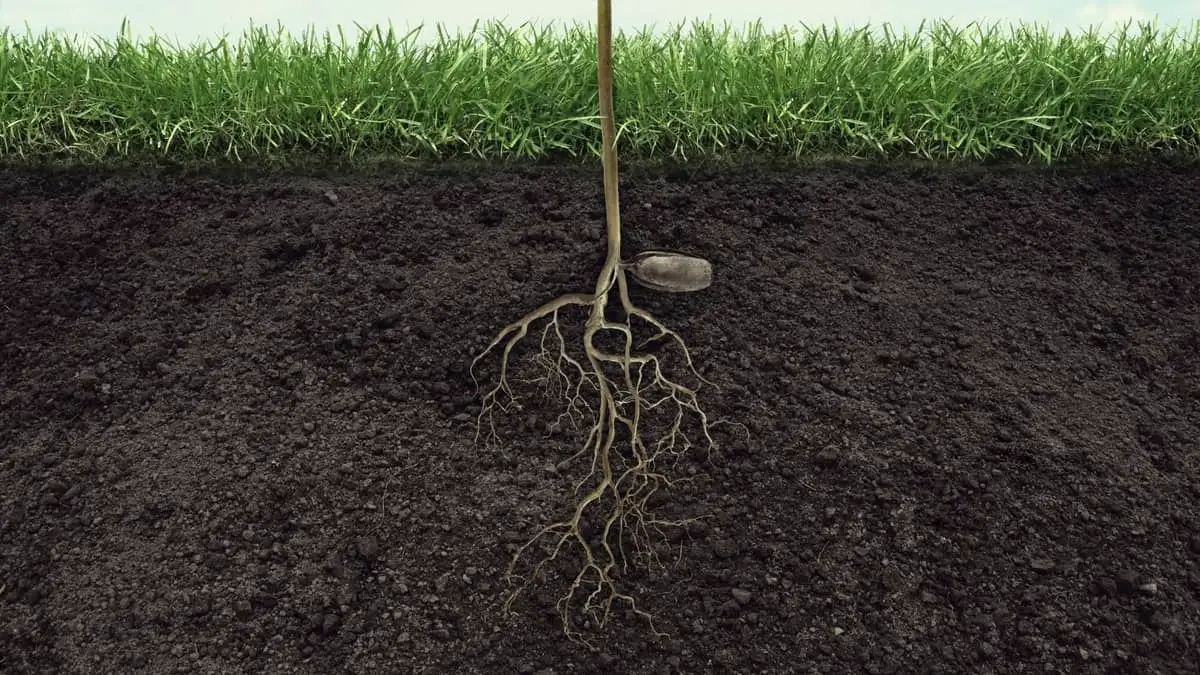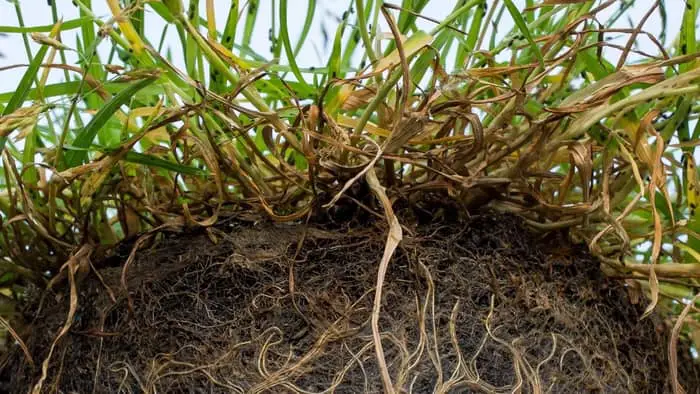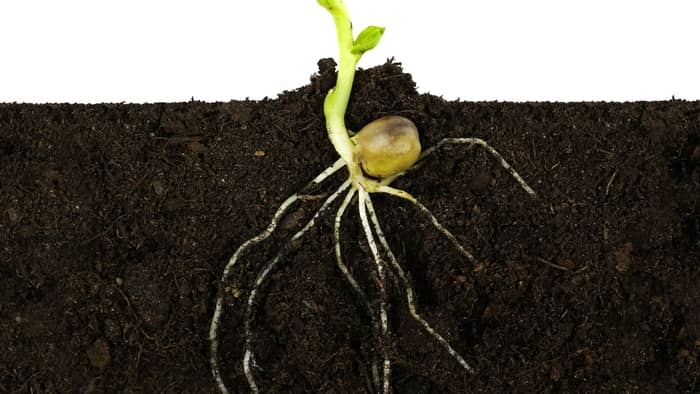Last Updated on September 14, 2022 by Griselda M.
Planting a garden is a rewarding experience, but it can also be daunting. There are so many choices, and some plants are easier than others. This article will help you get the most out of your garden, and guide you in the world of taproot plants.
Taproot plants are a beautiful addition to any garden and provide us with a great opportunity to learn and practice patience. They are great beginners plants to get a hang of growing indoors and require less space than other plants. Their foliage is small and green, making them easy to care for and maintain.
Taproots grow straight down from the top of the plant and reach around to the bottom of the pot. They can grow as large as one foot in diameter and reach about 30 inches tall.
With winter approaching and the growing season starting to wind down, I thought it would be a great idea to write an article about the best way to grow and care for your taproots plants—those plants that will continue to live through the winter.
This guide will teach you how to grow and care for your home’s taproots, including where they should be planted and what to expect in the coming months.
Taproot System and Fibrous Roots System Differences
You probably have heard of the term “taproot”. It is used when describing a group of species of plant. The taproots of these plants can be quite large. Usually, the taproots are located just below the soil surface. They are the major portion of the plant’s mass and the part that provides nutrients to the plant. They also provide the bulk of the plant’s strength.
Fibrous root plants are used by gardeners who don’t want to deal with a lot of work to establish a new plant. Instead, they look for plants that already have roots that are thick and strong. These roots help the plants to grow quickly and in many cases, they don’t need to be fertilized or watered as often.
Read more about Tap Root Examples – Overview Of The Great Tap Root System In Plants And Examples
Choose the Right Spot to Plant Your Taproot Plants
If you’re unsure how to choose a location for your taproot plants, then we are here to help. A taproot plant needs to be planted deep into the soil so that the roots can grow deep down into the soil.
If you plant a taproot plant too shallow, the roots will not get enough oxygen. This will cause the roots to die and the plant to wither. If that happens, you won’t be able to get any product from it. The taproot plant is very important because it provides nutrients to the trees and shrubs that you plant around it.
Taproot Plants – Ideal Planting Time of the Year
Taproots need the longest growing season. The taproot is the most important part of a plant’s root system and the most essential for water and nutrient absorption. It is usually planted during the cooler months of the year (late winter through early spring) because the ground needs to be cool for the roots to have enough time to grow and develop before the warmer weather comes.
Set up Your Taproot Plants Correctly
When you’re first planting these taproot plants, don’t be afraid to use the same tactics that are related to the normal root plants.
The next step in this process is the soil. Taproots don’t have the same nutritional value as their leafy counterparts, but they are a very important part of the plant’s survival and growth.
Taproots need a lot of space, so bear that in mind when choosing your container. It’s also a good idea to keep them at least 4-6 inches below the topsoil level since that is where the taproot will grow. They require regular watering to prevent their roots from drying out and dying off.
If they are left without water for a long period, they will rot and die. If the plant gets too much water, the taproot can become stunted, and the plant can grow weak. This is why it’s important to maintain good soil, and this includes a balanced pH level.
Watering and Fertilizing of Taproot Plants
A plant’s taproot is the center of its roots. This is the part of the root that draws water and nutrients from the soil. In the wild, taproots are constantly being re-energized by their surroundings.
As they explore the ground and find water and nutrients, the taproot grows longer and stronger. In the case of your plants, they need a similar approach. They need to be given what they need to grow and thrive.
They need regular water, nutrition, and light. A plant’s taproot can’t just be left to fend for itself; you need to feed it and water it regularly.
Preserve Your Taproot Plants
While you want your taproot plants to be strong and healthy, you don’t want to stress them out by over-watering them. If you have a very large pot, make sure that the container is large enough to allow all of the plant’s roots to expand and grow without becoming waterlogged.
And make sure that you don’t overwater any one plant more than the others. This can lead to nutrient deficiency and stunting.
Read more about Taproot System Vs Fibrous Root: 9 Important Differences
Conclusion on Taproot Plants
In conclusion, taproots are found in many types of soil, including sandy, clay, and loam. They provide a foundation for a healthy root system. Taproots grow straight down to get to the water and food that are beneath the soil surface.
Roots that are less than a few inches deep don’t penetrate deep enough to tap into the moisture that’s necessary for good plant growth. To ensure that your roots are growing deep and reaching the water that they need, consider planting in a container with a hole that’s at least several inches in diameter.
In addition, remember to water your plants often. This is especially true for plants that require a deep root system to thrive. Taproot plants are a must-have in any garden, but they can be tricky to find, grow, and care for. Learn everything you need to know to successfully select the right plants for your landscape.
FAQs
How Do Taproot Systems and Fibrous Root Systems Help Plants Survive and Reproduce?
Taproots can be found almost everywhere around the world. They serve as a vital anchor for the plant, allowing it to grow vertically and remain stable when other roots collapse. Because the taproot grows so deep, it usually gets the majority of the food and water from the soil. It also contains a network of lateral roots, which send out their own rootlets to search for food and water. Root tips can also develop into buds or flower stems. This allows the plant to grow new leaves and shoots. Fibrous roots are more common than taproots and grow down from the surface of the ground. They do not anchor the plant in the ground, but they do help distribute nutrients and water throughout the plant.
Why Might a Taproot Be an Advantage to Some Plants?
The taproot is an underground stem that typically originates at the base of the plant and extends down into the soil. It acts as the anchor point for the plant to grow. Since roots are usually spread out to find the most nutrient-rich areas of the soil, this allows them to maximize their growth. Without the taproot, they would be unable to spread out and unable to establish a good root system.
Can Plants Live When Taproot Breaks?
Plants can survive even if the taproot is broken. However, it depends on the amount of damage. As long as the damage is 50% or under, the plant will likely survive.
Which Type of Plants Have a Taproot?
Many plants with taproots are members of the pea family, including alfalfa, peas, clover, beans, and soybeans. The carrot and the beetroot are also taproot family plant members.
Branko is the world‘s most enthusiastic gardener! He is always on the hunt for the perfect flower, bush or tree to add to his ever–growing garden. He is known for his love of all things green, and his passion for nurturing the plants he grows is unmatched. He loves to get his hands dirty and can often be found humbly tending to his garden at all hours of the day. Branko is the go–to guy when it comes to gardening advice – he is always happy to share his knowledge and wisdom with anyone who will listen. He also loves to play pranks on unsuspecting visitors, so beware if you enter his garden!




